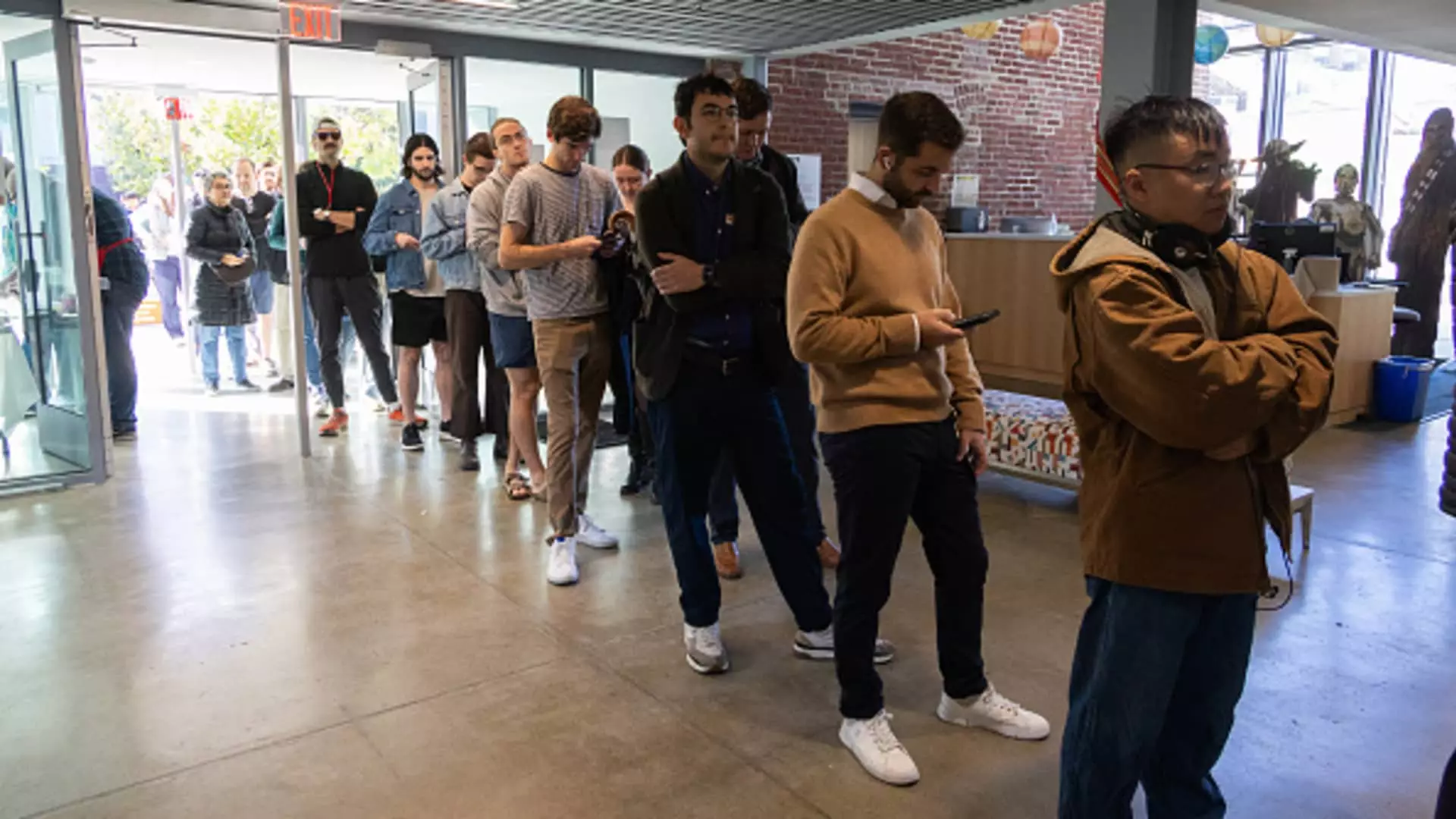The political landscape of any nation is often a melting pot of perspectives influenced largely by sociocultural factors, with gender being one of the critical differentiators. The recent U.S. elections underscore a profound gender gap that shapes electoral outcomes, with stark contrasts in how men and women perceive candidates, particularly regarding their economic aspirations and fears. As demographics shift and economic realities come into play, understanding these dynamics is paramount in deciphering election results.
As Americans approached the election, the divide along gender lines became increasingly evident. Women predominantly backed Vice President Kamala Harris, who garnered 53% of their support, contrasted with the 45% of their male counterparts favoring then-President Donald Trump. On the other side of the divide, men showed strong allegiance to Trump, supporting him at 55% versus Harris’s 42%. This significant 21-point gender gap, as unearthed by NBC News exit polls, illustrates a trend that transcends mere electoral choice; it indicates a chasm in economic perceptions and societal roles.
The underlying factors contributing to this gender split are complex and require an examination of both demographic shifts and economic sentiment. While Trump gained traction among men, especially on economic matters, women’s support for Harris may reflect broader social values, including educational achievements and reproductive rights.
Economic factors emerged as pivotal in shaping voters’ attitudes, particularly among men who expressed concerns surrounding job security and economic mobility. Research highlights that men have faced increasing disillusionment regarding their prospects in the workforce. Julia Pollak, chief economist at ZipRecruiter, indicated that many men feel they lack a sustainable route for economic advancement, a sentiment echoed historically as more men, particularly those aged 25 to 54, exit the labor force.
Further compounding these challenges, studies from Pew Research Center reveal that men without a college education are leaving the workforce at inflated rates. In a nation where educational attainment has long been linked to economic opportunities, the contrasting statistics of educational achievements between genders are telling. Today, 47% of women aged 25 to 34 hold a bachelor’s degree, compared to 37% of men, illustrating a widening educational gap that may influence job market dynamics.
A concerning trend observed among young males is the rising number classified as NEETs (Not in Employment, Education, or Training). This demographic has particularly suffered due to globalization and the decline of manufacturing jobs, leaving many feeling abandoned by an evolving economy. As Richard Fry from Pew Research points out, the underwhelming incentives for work lead to a narrative where many young men question the relevance of their efforts in a challenging economic landscape.
The electorate’s sentiment was likely reflected in their voting habits. In a separate survey by the National Endowment for Financial Education (NEFE), many men predicted that the election’s outcome would impact their finances, further leaning towards Trump as a candidate who resonated with their immediate concerns. Such economic fears seem to overshadow other pressing issues and significantly influence ballot choices.
Contrasting the plight of young men, women have surmounted traditional challenges, significantly advancing in education and career trajectories. More women are choosing to prioritize professional success over early marriage or motherhood, adapting their societal roles to meet contemporary expectations. Pollak highlighted a noteworthy shift in women’s perspectives, advocating for policies that support this new normal, such as universal childcare and reproductive rights.
Despite women’s progress, the elections indicated that issues pertinent to motherhood and gender rights did not decisively increase their turnout. Fatima Goss Graves of the National Women’s Law Center noted the inherent complexities of women’s voting behavior in response to economic realities, emphasizing the multifaceted struggles that extend beyond reproductive justice.
The election outcomes of 2024 revealed more than a simple bipartisan division; they brought to light a critical examination of the evolving landscape of gender dynamics in the workforce and politics. The division of support reflects economic despair felt by men compared to the rising confidence among women. While the focus on women’s rights may not have mobilized the expected voter turnout this time, it is a reminder of the ongoing struggle for equality and representation.
The political landscape is transforming, where issues spanning education, workforce participation, and economic equity come to the forefront. Understanding these shifts is crucial for policymakers and political strategists alike. The discourse surrounding gender in the electoral realm is far from over, and as the nation evolves, so too must the conversation that seeks to bridge these divides.

